Birdfinding.info ⇒ Generally rare worldwide but seen regularly on pelagic trips out of Hatteras, North Carolina (where it is the second-commonest Pterodroma), and less often elsewhere in the western North Atlantic, mostly May to October. It is also found regularly in the waters around Mauritius, where small numbers breed. Other areas where it has been seen at least occasionally include Bermuda and Brazilian offshore waters.
Trindade Petrel
Pterodroma arminjoniana
Breeds on Trindade and around Mauritius, and ranges across the Atlantic and Indian Oceans.

Approximate at-sea distribution of Trindade Petrel. © BirdLife International 2018
Breeding. Breeds year-round on Trindade (and possibly also Martin Vaz) in the South Atlantic, and Round Island, just north of Mauritius in the western Indian Ocean. Both sites are at approximately the same latitude: 20° South.
On Trindade there are two main breeding periods, with most eggs laid in April and October. A 2008 estimate of that population was 1,130 pairs.
Nonbreeding. The Trindade Petrel’s range at sea encompasses much of the Atlantic Ocean north to Newfoundland and south to central Argentina. Almost all Atlantic records are from the western side of the ocean, both north and south, though there are at least three from Macaronesia (two from the Azores and one from Cape Verde).
It has been recorded in the North Atlantic throughout the year—most records from temperate waters have occurred between May and September, but that is also when observers are most present. Very few records from December to April—prominent among these was an individual seen repeatedly over Bermuda from January to May 2020 evidently prospecting for a nesting opportunity.
Occasionally seen from seawatch points and cruise ships along the eastern edge of the West Indies, with records spanning from Abaco to Guadeloupe, most apparently in October and November. There have been several onshore and inland records in the eastern U.S. during hurricanes in August and September.
Range at sea in the Indian Ocean is mostly conjectural. It certainly occurs in the western portion near Mauritius during most of the year and has been recorded at least once just offshore from Perth, Western Australia (June 27, 2019).
Identification
A medium-large gadfly petrel that has predominant pale and dark morphs as well as a wider spectrum that includes intermediate shades and a few that are paler or darker than the typical pale and dark morphs.
All plumages have essentially uniform upperparts: medium-to-dark gray or brownish (depending on feather-wear and lighting), sometimes with a scatter of paler flecks noticeable at close range.

Trindade Petrel, dark morph, dorsal view. (Offshore from Cape Hatteras, North Carolina; September 6, 2020.) © Patrick Maurice
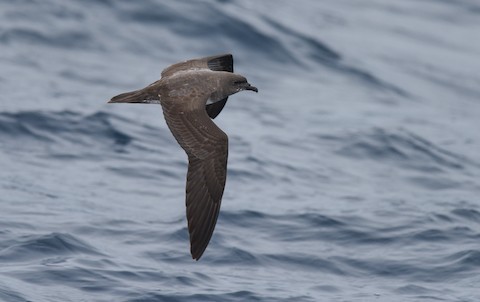
Trindade Petrel, pale morph, dorsal view. (Offshore from Long Island, New York; August 20, 2018.) © Sean Sime
The main differences are in the underparts. Typical pale morph is mostly white on the breast and belly with a medium-gray-to-browny hood that extends down to the chest. Most have a complete hood, though some individuals have a whitish throat.
Dark morphs have mostly uniform medium-gray-to-brown underparts, often with a scatter of paler flecks, and often detectably paler on the belly. Intermediate birds have more white on the belly. A few individuals are sootier and more uniformly dark than the average dark morph.

Trindade Petrel, pale morph. (Offshore from Long Island, New York; August 20, 2018.) © Tom Johnson

Trindade Petrel, pale morph. (Offshore from Natal, Rio Grande do Norte, Brazil; January 24, 2015.) © Fabio Olmos
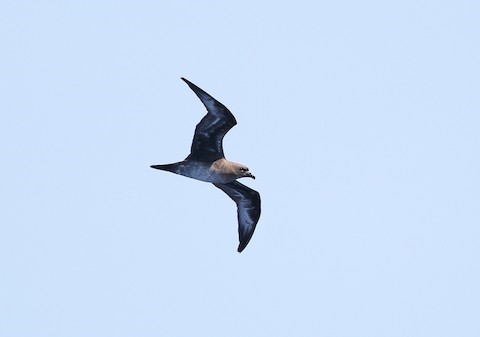
Trindade Petrel, intermediate morph with white belly speckled dark. (Offshore from Cape Hatteras, North Carolina; May 23, 2019.) © Kate Sutherland

Trindade Petrel, dorsal view of pale or intermediate morph appearing pale to medium brown above. (Offshore in mid-North Atlantic several hundred km east of Puerto Rico; January 18, 2015.) © Birding Aboard
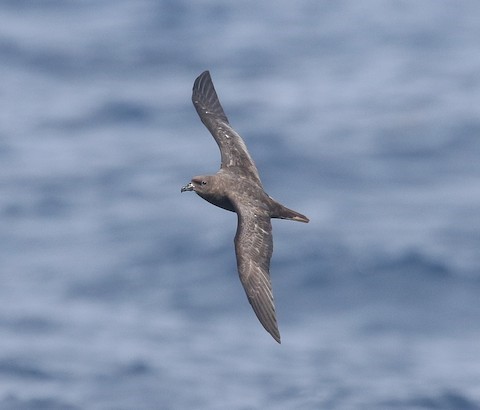
Trindade Petrel, dark morph, dorsal view. (Offshore from Cape Hatteras, North Carolina; August 11, 2017.) © Kate Sutherland

Trindade Petrel, dark morph, dorsal view. (Offshore from Cape Hatteras, North Carolina; May 31, 2020.) © Kyle Kittelberger

Trindade Petrel, dark morph, much darker than average. (Offshore from Cape Hatteras, North Carolina; June 2, 2020.) © Kate Sutherland
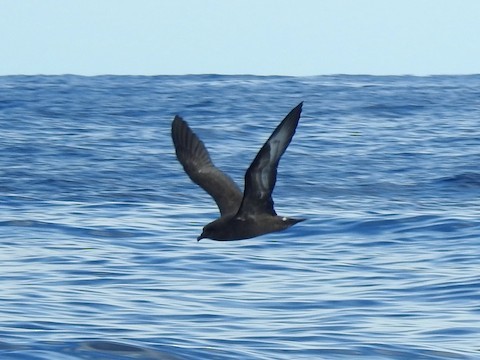
Trindade Petrel, dark morph, much darker than average. (Offshore from Cape Hatteras, North Carolina; June 2, 2020.) © Bob Butler

Trindade Petrel, dark morph. (Offshore from Cape Hatteras, North Carolina; August 11, 2017.) © Kyle Kittelberger

Trindade Petrel, pale morph with strong dark hood and somewhat atypical underwing pattern—lacking clear dark trialing edge on primaries. (Offshore from Bermuda; November 13, 2015.) © Angus Wilson

Trindade Petrel, pale morph with a limited hood and somewhat atypical underwing pattern. (Offshore from Cape Hatteras, North Carolina; September 6, 2020.) © Kate Sutherland
In comparison to similar species (especially Herald and Kermadec Petrels; see below), the underwing pattern is the most important feature. Both pale and dark morphs share essentially the same pattern: dark leading and trailing edges with a paler strip in between, centered on the overlap between the wing linings and flight feathers. The paler area extends from the bases of the primaries along the bases of the secondaries across most of the wing.
There is some variation in the intensity and balance of light and dark coloration on the underwing. Some pale morphs are more extensively white and some dark morphs have a more limited whitish strip, but the overall pattern is consistent.

Trindade Petrel, pale morph showing typical underwing pattern. (Offshore from Long Island, New York; August 20, 2018.) © Sean Sime

Trindade Petrel, pale morph showing typical underwing pattern. (Offshore from Cape Hatteras, North Carolina; May 23, 2019.) © Kate Sutherland
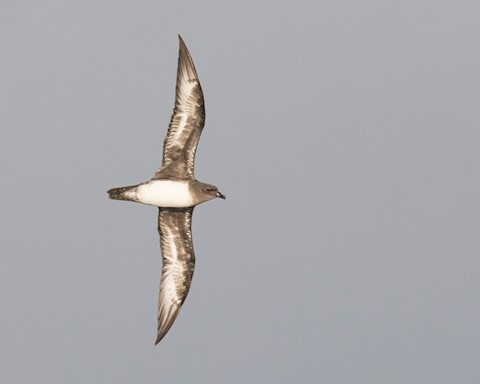
Trindade Petrel, pale morph. (Offshore from Bermuda; November 13, 2015.) © Angus Wilson
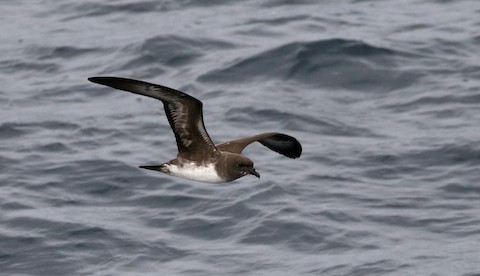
Trindade Petrel, pale morph with strongly defined dark hood. (Offshore from Long Island, New York; August 20, 2018.) © Jay McGowan

Trindade Petrel, intermediate or dark morph with some white on the belly. (Offshore from Cape Hatteras, North Carolina; September 6, 2020.) © Kate Sutherland
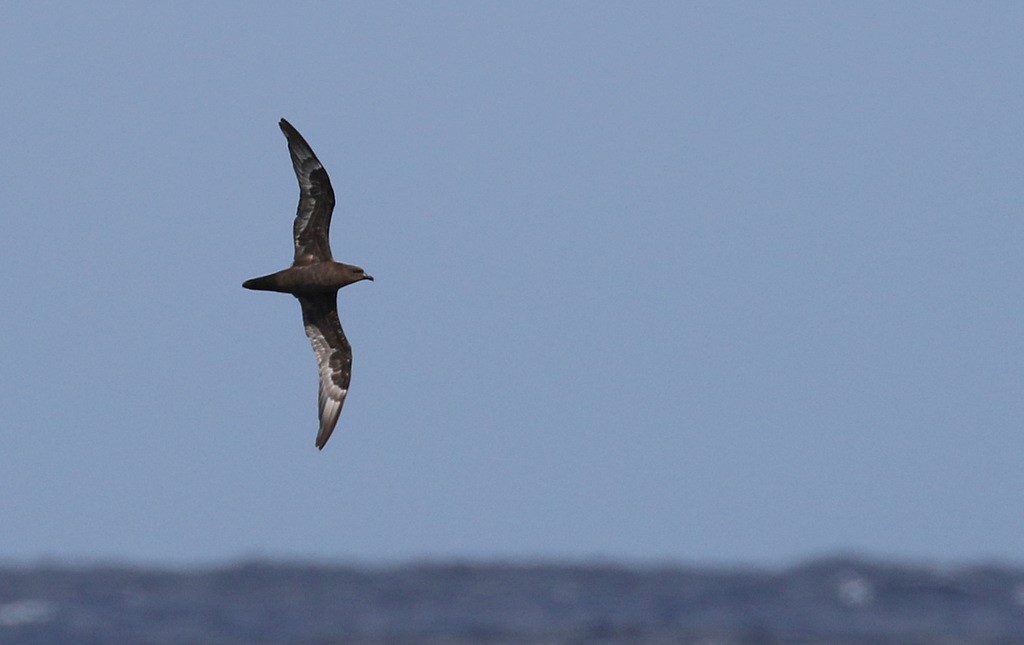
Trindade Petrel, dark morph, darker than most and showing atypical underwing pattern. (Offshore from Cape Hatteras; May 27, 2020.) © Matthew Grube

Trindade Petrel, pale morph showing typical underwing pattern. (Offshore from Natal, Rio Grande do Norte, Brazil; January 24, 2015.) © Fabio Olmos

Trindade Petrel, pale morph with extensively pale underwings. (Offshore in mid-North Atlantic several hundred km east of Puerto Rico; January 18, 2015.) © Birding Aboard
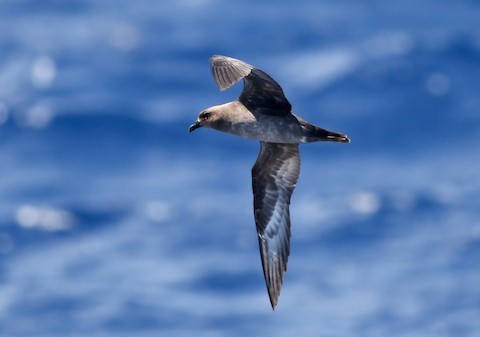
Trindade Petrel, intermediate morph. (Offshore from Cape Hatteras, North Carolina; August 2, 2018.) © Kate Sutherland

Trindade Petrel, intermediate or dark morph with some white on the belly and extensively pale underwings. (Offshore from Cape Hatteras, North Carolina; September 6, 2020.) © Ed Corey
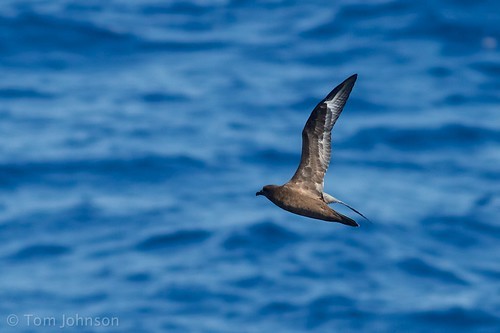
Trindade Petrel, dark morph showing very little pale area on the underwing. (Offshore from Oregon Inlet, North Carolina; August 12, 2013.) © Tom Johnson
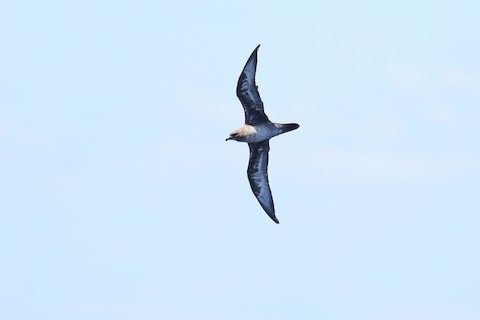
Trindade Petrel, intermediate morph. (Offshore from Cape Hatteras, North Carolina; June 1, 2020.) © Kate Sutherland
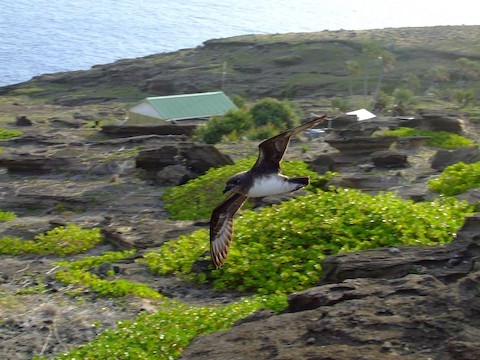
Trindade Petrel, pale morph near nesting area. (Round Island, Mauritius; December 30, 2006.) © Shane McPherson
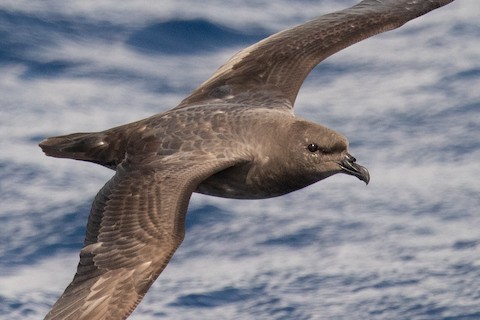
Trindade Petrel, dark morph, dorsal view. (Offshore from Cape Hatteras, North Carolina; September 6, 2020.) © Ed Corey
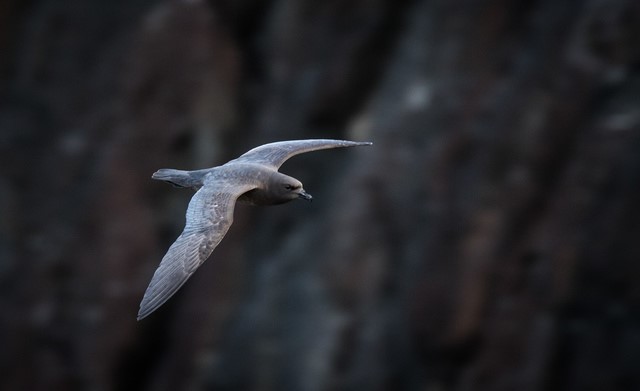
Trindade Petrel, dark morph showing generally pale, speckled upperparts. (Ilha da Trindade, Brazil; April 15, 2017.) © Vitor Barbosa
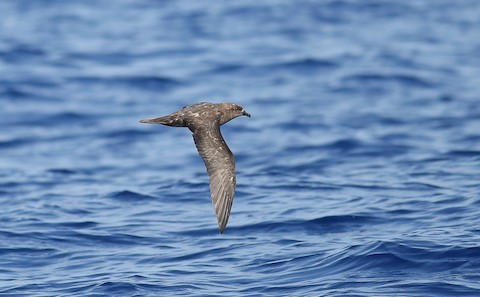
Trindade Petrel, dorsal view of dark morph with extensively speckled upperparts. (Offshore from Cape Hatteras, North Carolina; June 28, 2019.) © Kate Sutherland

Trindade Petrel, dark morph, dorsal view. (Offshore from Cape Hatteras, North Carolina; August 2, 2018.) © Kate Sutherland

Trindade Petrel, dark morph, dorsal view showing atypically all-dark upperparts. (Offshore from Cape Hatteras, North Carolina; June 2, 2020.) © Bob Butler
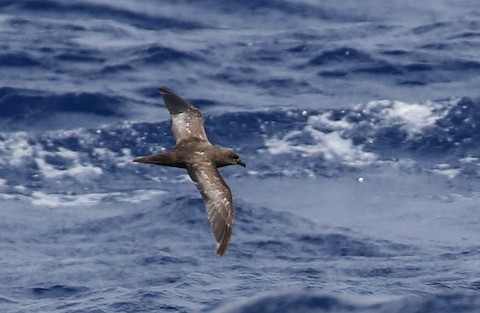
Trindade Petrel, dark morph, dorsal view showing atypical pale patches on uppersides of wings. (Offshore from Cape Hatteras; May 27, 2020.) © Matthew Grube

Trindade Petrel, dark morph showing typical underwing pattern. (Offshore from Cape Hatteras, North Carolina; September 6, 2020.) © Gautam Apte

Trindade Petrel, dark morph, dorsal view. (Offshore from Cape Hatteras, North Carolina; August 11, 2017.) © Kyle Kittelberger

Trindade Petrel, dorsal view of dark morph in worn plumage, molting wing feathers. (Offshore from Cape Hatteras, North Carolina; May 29, 2019.) © Frank Hawkins
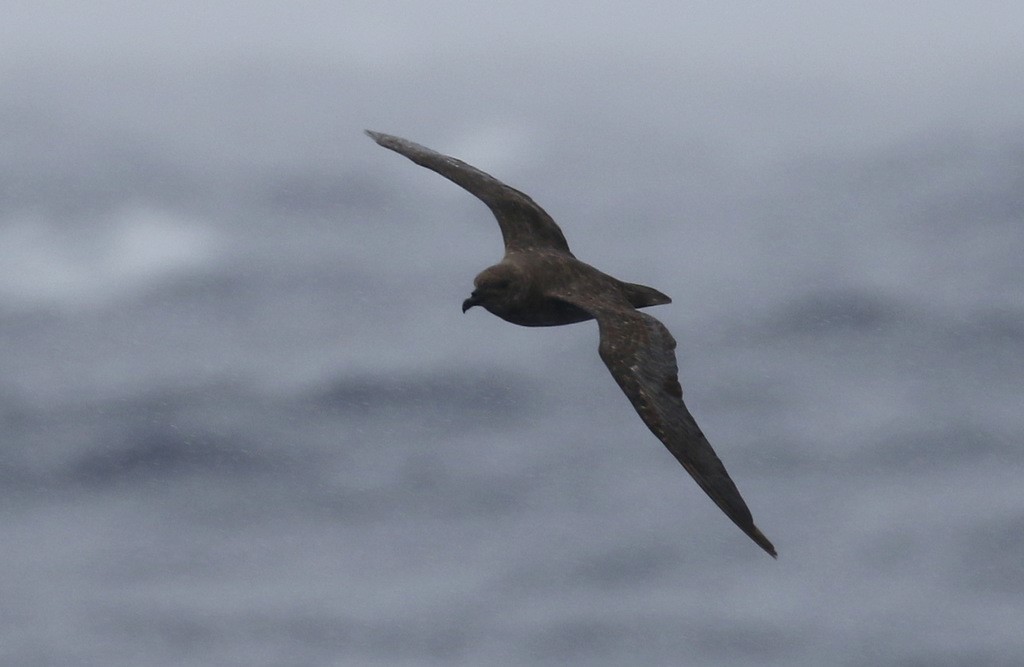
Trindade Petrel, dark morph, darker than most. (Offshore from Cape Hatteras, North Carolina; May 27, 2020.) © Matthew Grube
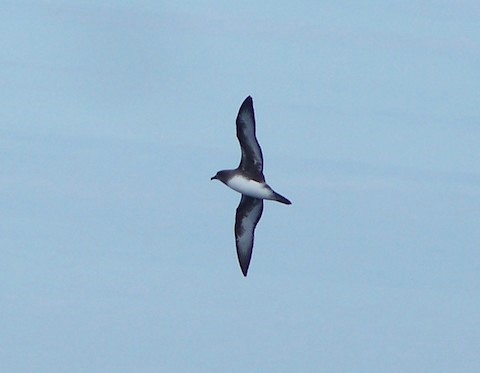
Trindade Petrel, pale morph showing unusually strong contrast on underwings. (Offshore from Rocha, Uruguay; April 21, 2007.) © Martin Abreu
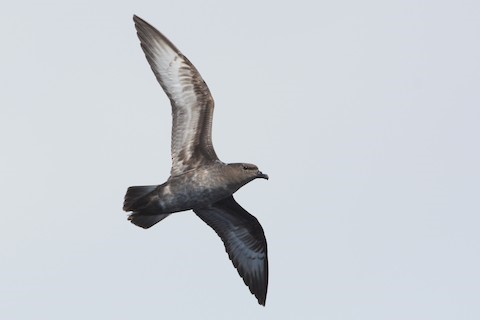
Trindade Petrel, dark morph with some white on the belly, showing typical underwing pattern. (Offshore from Cape Hatteras, North Carolina; September 6, 2020.) © Patrick Maurice
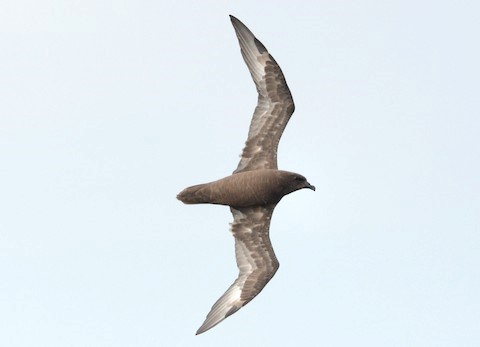
Trindade Petrel, dark morph with somewhat atypical underwing pattern. (Offshore from Cape Hatteras, North Carolina; May 31, 2020.) © Kyle Kittelberger

Trindade Petrel, dark morph pair. (Ilha da Trindade, Brazil; November 17, 2017.) © Daniela Maia

Trindade Petrel, dark or intermediate morph. (Ilha da Trindade, Brazil; October 14, 2017.) © Daniela Maia

Trindade Petrel, pale morph on nest. (Ilha da Trindade, Brazil; August 20, 1994.) © Francisco Neto
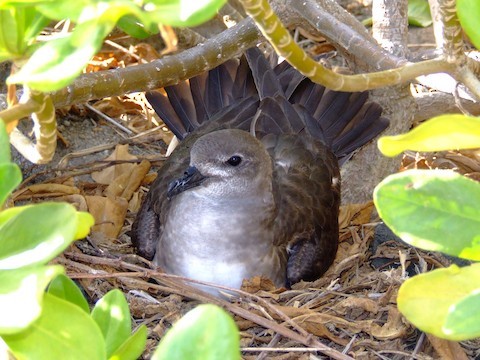
Trindade Petrel, pale morph on nest. (Round Island, Mauritius; December 30, 2006.) © Shane McPherson
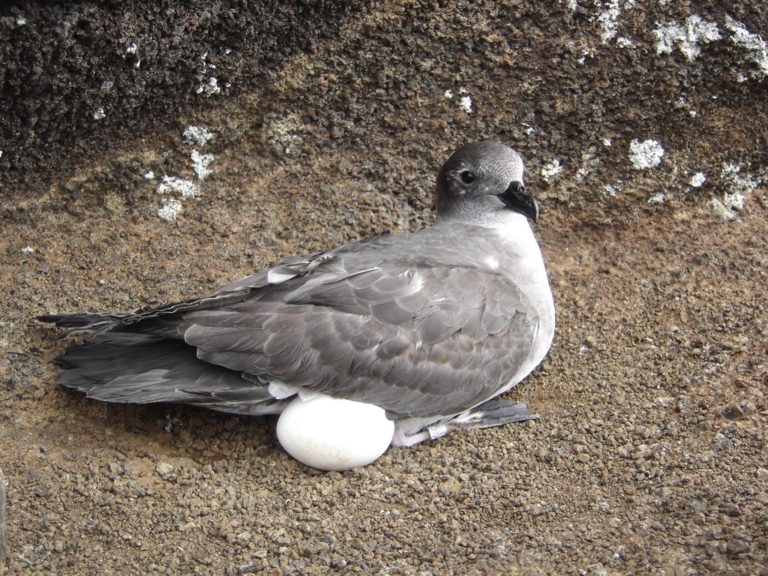
Trindade Petrel, pale or intermediate morph with egg. (Ilha da Trindade, Brazil; April 8, 2007.) © Hudson Pinheiro

Trindade Petrel, pale morph pair. (Ilha da Trindade, Brazil; July 19, 2017.) © Samantha Klein

Trindade Petrel, dark morph with egg. (Ilha da Trindade, Brazil; May 10, 2010.) © Leonardo Schuch Borges

Trindade Petrel, pale morph with egg. (Ilha da Trindade, Brazil; April 26, 2013.) © Sérgio Seven

Trindade Petrel, pale morph with chick, allowing a close study of its undertail pattern. (Ilha da Trindade, Brazil; February 10, 1999.) © Francisco Neto
Cf. Herald and Kermadec Petrels. Herald, Trindade, and Kermadec Petrels are a closely related, confusing trio that can be difficult to identify in places where they overlap. Geography is the first clue: Trindade owns the Atlantic; Herald and Kermadec are widespread across the Pacific; and Trindade, Herald, and Kermadec all occur in small numbers in the Indian Ocean—all breeding, and to some extent interbreeding, beside Mauritius on Round Island.
Trindade and Kermadec Petrels both vary from pale-bellied (pale or intermediate morphs) to dark-bellied (dark morphs). Kermadec has a wider range of pale color morphs than Trindade, and some are distinctive. For the morphs that are generally similar between Kermadec and Trindade, their underwing patterns differ consistently. On Kermadec, the underwing is mostly dark, but mottled, and with a large, immaculate white triangle in the primaries, framed with dark edges, whereas on Trindade, the underwing has an overall pattern of dark leading and trailing edges with a paler strip in between, centered on the overlap between the wing linings and flight feathers.
Trindade’s underwing varies in the proportions of light and dark, but the general pattern is consistent—although on some dark morphs the underwing can appear nearly all-dark, and some light morphs have much more extensive white and a narrow dark trailing edge.
Herald Petrel is consistently (perhaps always) pale-bellied, and has an underwing pattern that is approximately intermediate between Trindade and Kermadec: mostly dark with a smaller white patch in the primaries and a slightly paler area across the base of the secondaries. Herald usually (perhaps always) has a whitish area that includes the lores and chin, which distinguishes it from both Trindade and Kermadec.
The upperside of the wing can be important for distinguishing Kermadec from the others. Kermadec consistently shows a white stripe across the base of the primaries, whereas Trindade and Herald have essentially unform upperwings.
Kermadec also differs from the other two in shape, as it usually appears much more robust, with proportionately shorter, broader wings and tail. It also tends to be more aggressive around some other species, often behaving like a skua (which it often resembles, but much smaller).
Cf. Atlantic Petrel. Trindade and Atlantic Petrels occur together in the South Atlantic. The palest Trindade Petrels resemble the darkest Atlantic Petrels, but the underwings differ. Atlantic’s underwing is essentially all-dark, unlike Trindade’s pattern of dark leading and trailing edges with a paler strip in between.
Notes
Monotypic species. Formerly regarded as conspecific with Herald Petrel (P. heraldica) and Henderson Petrel (P. atrata), known collectively as the Herald Petrel (P. arminjoniana).
IUCN Red List Status: Vulnerable.
References
Alderfer, J., and J.L. Dunn. 2014. National Geographic Complete Birds of North America (Second Edition). National Geographic Society, Washington, D.C.
BirdLife International. 2018. Pterodroma arminjoniana. The IUCN Red List of Threatened Species 2018: e.T22698005A132618884. https://dx.doi.org/10.2305/IUCN.UK.2018-2.RLTS.T22698005A132618884.en. (Accessed September 17, 2020.)
Brooke, M. 2004. Albatrosses and Petrels across the World. Oxford University Press.
eBird. 2020. eBird: An online database of bird distribution and abundance. Cornell Lab of Ornithology, Ithaca, N.Y. http://www.ebird.org. (Accessed September 17, 2020.)
Garcia-del-Rey, E. 2011. Field Guide to the Birds of Macaronesia: Azores, Madeira, Canary Islands, Cape Verde. Lynx Editions, Barcelona.
Harrison, P. 1983. Seabirds: An Identification Guide. Houghton Mifflin, Boston.
Howell, S.N.G., and K. Zufelt. 2019. Oceanic Birds of the World. Princeton University Press.
Kirwan, G.M., A. Levesque, M. Oberle, and C.J. Sharpe. 2019. Birds of the West Indies. Lynx Edicions, Barcelona.
Onley, D., and P. Scofield. 2007. Albatrosses, Petrels & Shearwaters of the World. Princeton University Press.
van Perlo, B. 2009. A Field Guide to the Birds of Brazil. Oxford University Press.
Xeno-Canto. 2020. Trindade Petrel – Pterodroma arminjoniana. https://www.xeno-canto.org/species/Pterodroma-arminjoniana. (Accessed September 17, 2020.)
